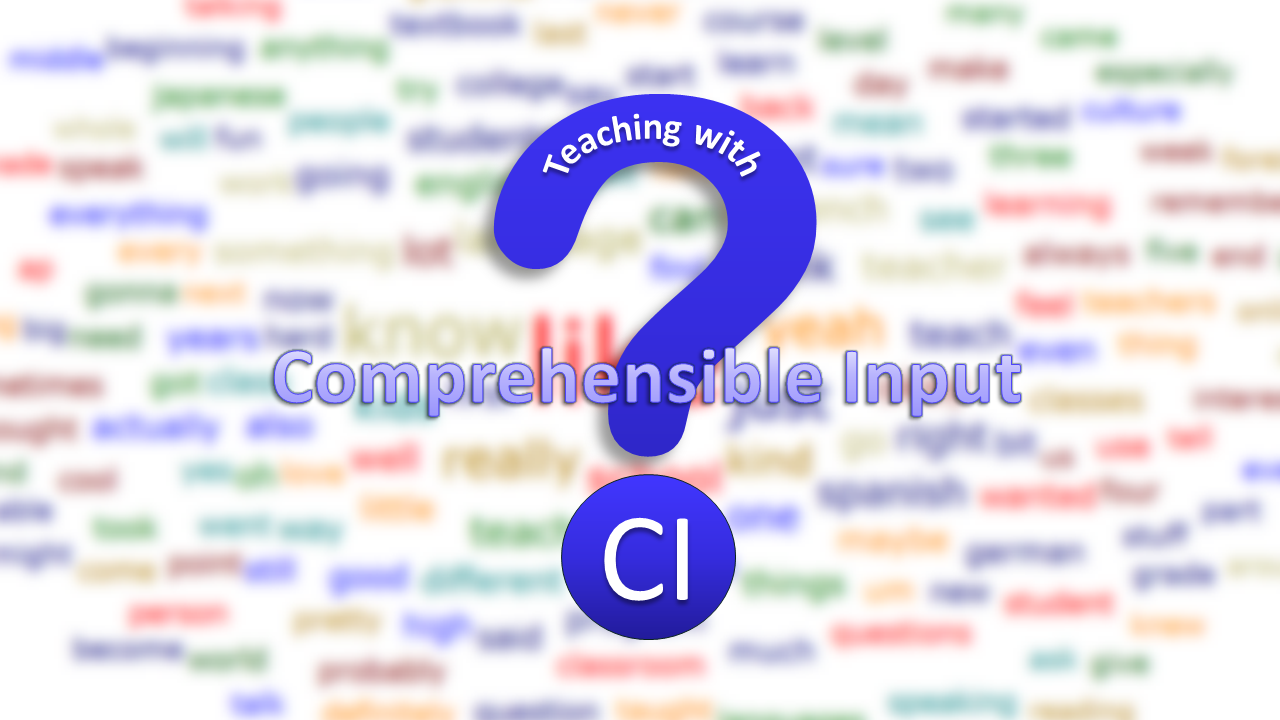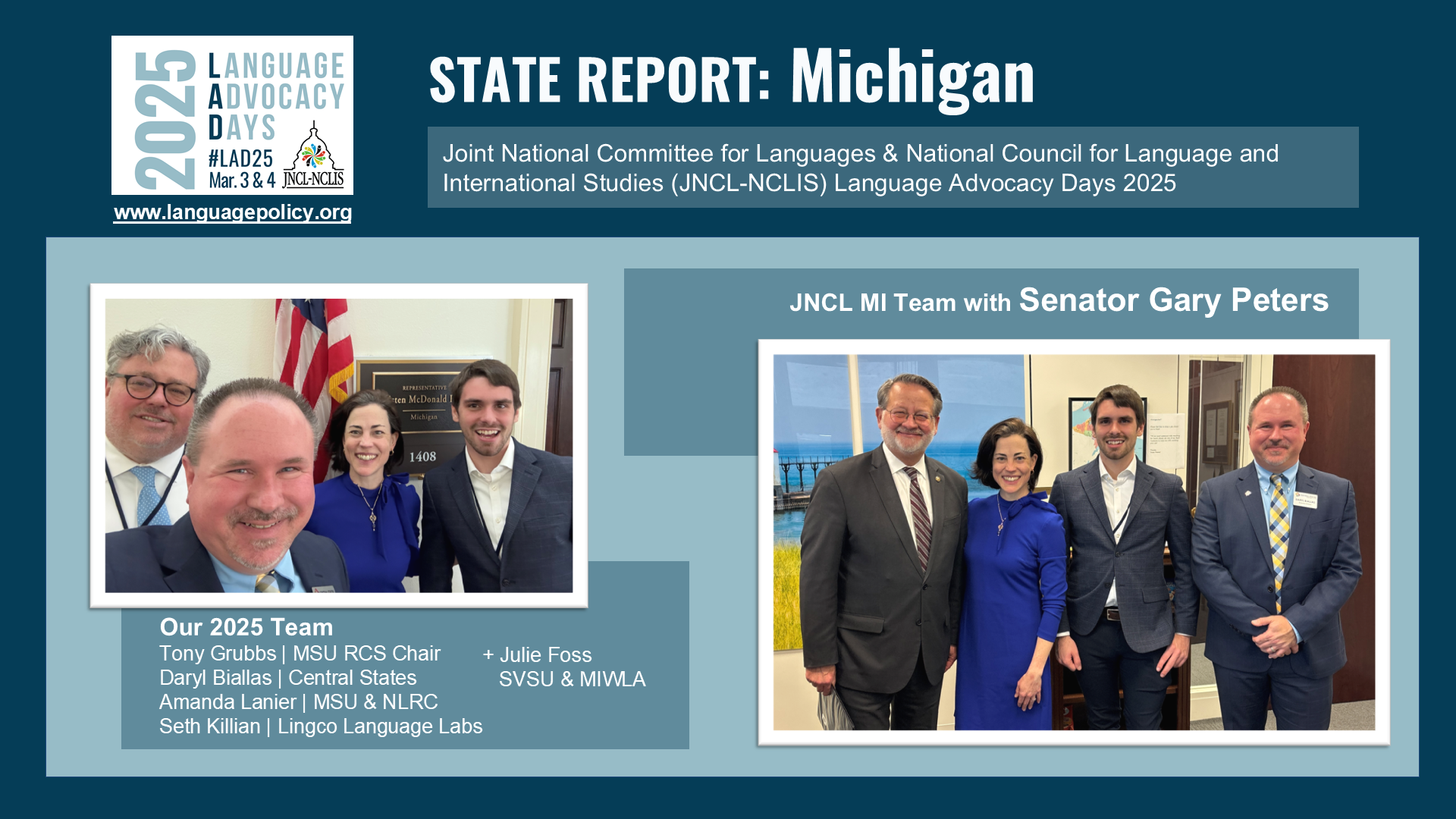In order to answer the question in the title, I actually framed the answer the other way around:
What is the opposite of teaching with Comprehensible Input?
Is it INcomprehensible input? Comprehensible OUTput? Teaching grammar? Thematic units? If you are a foreign language teacher in the U.S., or you know a few of them, you have probably heard the phrase “comprehensible input” many times in the last few years. What does CI really mean, though, and what does it mean to teach with CI?

The actual methods and the impact of CI-based approaches deserve many more words than I am going to give them in this post. You can read a longer explanation and see references in the file below.
What I want to do here is to answer a question that comes to mind every time I read a teaching philosophy these days. If you claim to be teaching with CI, then what are you not doing? What is the opposite of teaching with CI?
The definition of CI has become contentious to some extent, but this post is an anti-fight-club explanation! (There really is a CI Fight Club group on FaceBook with over 1000 members.) This set of answers remains relevant even though terms like “comprehension-based communicative language teaching” (as per the ACTFL Special Interest Group) and “acquisition-driven instruction” (ADI) have replaced TPRS and CI in some circles.
Is it teaching with INcomprehensible input?
One of the first phrases I have learned in every language I have studied is, “I don’t understand,” followed by “I don’t know,” and “What does ___ mean?” We should try to make input comprehensible to learners, but some of the input will always be incomprehensible. If not, then they will not learn.
The sweet spot for language acquisition is somewhere between understanding everything you read and hear and being totally lost while everyone gabs around you. If you have ever been immersed in a language other than your mother tongue, then you know that at first it sounds like long strings of nonsense, and then eventually you start to make sense of it. As teachers, that is the process we want to tap into for learners even when they are not immersed.
Is it teaching with comprehensible OUTput?
Usually when we talk about language proficiency, we say that someone “speaks” the language. People who don’t teach languages or study language teaching don’t talk about speaking, listening, reading, and writing as separate skills (much less ACTFL’s interpretive, interpersonal, and presentational taxonomy). However, communicative competence includes both receptive skills (interpreting input) and productive skills (creating output and interaction).
Learners need to understand most of what they receive when they listen and read, but that is not enough for acquisition to happen. They also need to try to make themselves understood. When they fall short of that in the real world, they might get only embarrassment or further confusion. When that happens in a language class, a good teacher can help them to see why they were misunderstood and shape the message better. That shaping and reshaping of your message until it gets across is known in SLA circles as negotiation of meaning.
When a learner makes a mistake in their output and confuses the message, that doesn’t mean everything stops so that we can have a grammar lecture for thirty minutes. It might mean just repeating what the learner said with a question in your voice. That is one form of implicit feedback. The point is that the teacher not there to keep a tally of errors. You are there to curate input and also to guide output.
Is it teaching WITHOUT comprehensible input?
The barrier that stands in the way for most foreign language learners is not so much that they don’t understand the input that they get but that they just don’t get enough rich, compelling input. If they aren’t exposed to the language enough, then the cognitive abilities that support language acquisition below the surface of our awareness can’t kick in and process the new linguistic system.
Also, they can’t develop more conscious language awareness and the various skills that make them better language learners. If nothing else, one of our primary mandates as teachers should involve providing a lot of varied input. Again, not all of it will be comprehensible, and not all of it should be. With good support in a language class, learners will comprehend more of it than they could on their own, but they should also get better at seeking out more input beyond the classroom.
Is it teaching grammar, vocabulary, and “thematic units” all the time?
The main reason that I think we are talking about teaching with CI at all is that there are a lot of foreign language teachers who are dissatisfied with the materials that they have and with the traditional ways of teaching that they experienced themselves. They can see that talking about grammar and drilling lists of vocabulary and plodding through a series of disconnected textbook units on marginally relevant topics are more likely to decrease motivation than increase proficiency.
The problem is teaching so that a language class involves learning about the language rather than learning to use the language.
Teaching grammar is not the problem. Teaching vocabulary is not the problem. Teaching with thematic units is not the problem. The problem is teaching so that a language class involves learning about the language rather than learning to use the language. You can’t tell someone how to use the language. Some things you tell a learner might help, but it will never be enough to tell, to explain, to offer explicit rules, and test knowledge of rules. Instead, we need to focus on creating opportunities for learning to happen.
So should we try to teach with CI or not?
Learning and acquisition have been described as different processes, most notably by Stephen Krashen, who is a passionate and influential teacher educator and an insightful observer of language learners and learning. I am not going to debate that distinction here. Developing communicative competence and becoming a language learner who will continue to become more competent over time will involve some conscious, explicit learning and some subconscious, gradual acquisition.
If TCI appeals to you, then it is probably because your own investigation of it has led you to a lot of dedicated and innovative educators who want to do a better job of giving learners the opportunities they need to develop proficiency in an instructed setting. There are many ways to do that, and there is no magic bullet method that will make it happen. The magic is in you, the engaged and innovative teacher. If you focus on listening to your students’ interests, communicating with them, and helping them to communicate meaningfully with you and with others who use the target language, then learning will happen. The learning that happens may not be exactly what you plan, and the plans you make will not always go as intended, but that is when you learn and hone your skills.
If anyone tells you that TCI has been proven to be the best way to teach or that it is the only research-based way or that if you are not doing it then you are out-of-date and lost, then walk the other way.
Your skills will not hone themselves. You need to be observing other teachers, exploring various techniques, and developing a deeper understanding of language learning processes through reading and through reflection. The best language teachers I know tell me all the time that they are not sure whether they are doing it right. I answer that there are many right ways, and they have to find the right ways for their learners, their contexts, and themselves. If anyone tells you that TCI has been proven to be the best way to teach or that it is the only research-based way or that if you are not doing it then you are out-of-date and lost, then walk the other way.
If aiming to teach with comprehensible input means that you are reaching out to other language teachers and considering ways to improve and respond better to your learners’ needs on a daily basis, then keep aiming in that direction.
However, if aiming to teach with comprehensible input means that you are reaching out to other language teachers and considering ways to improve and respond better to your learners’ needs on a daily basis, then keep aiming in that direction. Teaching a foreign language well is not actually magic, but you need to claim your own power to figure it out and find your own input and your own guides who can help you along that path.

The work on this page by Amanda Lanier is licensed under a Creative Commons Attribution-NonCommercial-NoDerivatives 4.0 International License.




